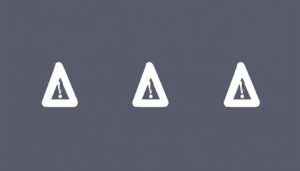In technology and business, the term ‘GOAT’—Greatest of All Time—signals lasting influence, exceptional achievement, and distinct vision. It sets a high bar for individuals and organizations whose advancements shape entire industries and establish new standards.
Recognizing a true GOAT in these fields means evaluating impact, consistency, and leadership, not just short-term success. For IT professionals, developers, and business leaders, the GOAT standard is more than recognition. It’s a measure for innovation, responsibility, and real-world progress—values that inform future decisions and drive continued excellence.
Origin and Evolution of the GOAT Concept
The GOAT acronym has traveled far from its roots. Today, it is recognized as a marker of excellence, notably in technology and business. Understanding how this term developed brings clarity and depth when assessing leaders across industries. The journey of “Greatest of All Time” gives context to those who strive for sustained results and exemplary leadership.
Early Roots in Sports
The origin of “GOAT” lies in sports, where fans and analysts have long debated about exceptional talent. In boxing, players like Muhammad Ali were described as the greatest for their unmatched skill and influence. The phrase then spread throughout sports, capturing the skills of icons such as Michael Jordan in basketball and Serena Williams in tennis. In these areas, “GOAT” stood for proven results, consistent performance, and rare influence.
From Athletics to the Boardroom
Business and technology soon adopted the term, mirroring the focus on sustained achievement over momentary success. “GOAT” in these fields describes people and organizations whose work changes standards and expectations. Figures like Steve Jobs and Elon Musk are often discussed as GOATs in tech, thanks to their visionary leadership and lasting results. Teams that set new industry benchmarks, create breakthrough products, or pioneer new markets often gain this title.
Influence of Digital Culture
The spread of social media helped the GOAT concept move quickly into mainstream conversation. Memes, hashtags, and discussions on platforms such as Twitter and Reddit made the acronym part of daily language. It has become central both for peer recognition and for wider debates on influence and strategy outside of sports. The acronym’s concise format suits the fast pace of digital communication, enabling broad adoption.
Significance in Tech and Business
For leaders and thinkers in tech or business, the GOAT label signals more than just popularity. It reflects years of innovation, the ability to adapt, and the rare skill of staying ahead. Companies strive for the GOAT standard as it represents unmatched products, ethical leadership, and real value to society. Individuals working toward this benchmark focus on vision, reliability, and measurable progress.
Understanding the GOAT’s evolution gives today’s professionals context for its ongoing relevance. It is not just about past greatness; it serves as a modern metric for progress and lasting value in a competitive field.
Defining GOATs in Technology and Business
In technology and business, the term “GOAT” highlights individuals, companies, or products that set benchmarks few can match. To distinguish true GOATs, one must look beyond short-lived popularity and focus on lasting influence, consistent quality, and the ability to shape entire industries. Those considered GOATs have clear and proven records of advancing their fields through original thinking, strong leadership, and continued relevance.
Key Characteristics of Tech and Business GOATs
GOATs in technology and business share certain defining qualities that set them apart:
- Innovation: They introduce ideas or products that transform industries, often shifting how people approach problems and solutions.
- Leadership: GOATs lead teams with vision, guiding organizations through complex developments and uncertain markets.
- Impact: Their contributions result in significant, positive change, influencing how businesses operate and how technology serves society.
- Resilience: They navigate setbacks, adapting strategies without losing sight of core values and long-term goals.
- Quality: Consistent delivery of reliable and high-performing products or services is a hallmark.
Each of these traits is essential, but it’s their combination that creates lasting legacy. For those in IT or the developer community, such attributes form the criteria by which to measure icons—and to aspire toward similar achievements.
Examples of GOATs in the Tech Space
The following examples highlight the breadth of GOATs in technology:
- Individuals:
- Steve Jobs: Credited for elevating Apple and introducing design-focused products like the iPhone and MacBook, fundamentally shifting personal computing and mobile technology standards.
- Linus Torvalds: Created Linux, an operating system kernel powering everything from servers to smartphones. His commitment to open source has influenced how software is built and distributed.
- Companies:
- Microsoft: Its Windows OS and Office suite remain foundations for business and personal computing worldwide. Microsoft’s ongoing innovation confirms its GOAT status.
- Intel: Led the development of modern processors. Their chips have powered countless devices, from PCs to data centers.
- Products:
- Arduino: Simplified electronics prototyping, allowing developers and hobbyists to turn ideas into functional devices quickly.
- Raspberry Pi: Brought affordable computing to education and industry, helping a generation of developers learn programming and hardware skills.
These examples rise to the GOAT level not just for technical achievement, but because of their role in setting enduring industry standards. Their influence spreads across communities and continues to inspire new solutions.
 Photo by Jakub Zerdzicki
Photo by Jakub Zerdzicki
For a deeper perspective on the intersection of leadership and impact in technology, visit discussions such as What’s the hidden relationship between Sysadmin and GOATs? where industry professionals debate roles and influence.
These benchmarks guide current and future innovators. GOATs continue to shape the values and expectations for what makes lasting success in technology and business.
The Role of GOATs in Inspiring Innovation and Growth
When discussing innovation and growth in technology and business, GOATs—those recognized as the Greatest of All Time—set expectations for performance, creativity, and direction. Their work does not just break new ground; it becomes the framework others aim to follow. By establishing standards, GOATs influence entire industries, encourage bold thinking, and guide responsible growth.
 Photo by Egor Komarov
Photo by Egor Komarov
Through their examples, GOATs have created a persistent culture of improvement. This influence is seen not just in the launch of new tools or products, but in how teams organize, respond to setbacks, and plan for the future. For IT professionals and developers, understanding these patterns provides practical insights for strategic growth and effective leadership.
Lessons Developers and IT Leaders Can Learn from GOATs
Observing GOATs in technology and business reveals clear lessons that can be directly applied to professional development and organizational strategy.
- Set Clear Standards: GOATs do not accept vague targets. They set measurable goals for both product quality and operational efficiency. Adopting this approach can improve team accountability and output.
- Champion Sustainable Innovation: Instead of chasing every trend, GOATs focus resources on advancements that support long-term value, mirroring the principles of responsible technology development outlined in sources such as Science, technology, innovation and governance for the goat sector.
- Foster a Culture of Learning: GOATs invest in continuous education for themselves and their teams. Encouraging personal and technical growth helps an organization stay adaptive and competitive.
- Resilience Under Pressure: High performers consistently manage setbacks without abandoning their core vision. Developing resilience means designing processes that recover gracefully and build trust over time.
- Embrace Constructive Risk: GOATs view risk as an essential part of growth. By assessing and managing calculated risks, they open doors to breakthrough innovation and market leadership.
For IT leaders, these lessons translate into actionable steps:
- Adopt frameworks that set specific, achievable milestones.
- Regularly review and update development practices to prioritize sustainable progress.
- Promote technical upskilling and knowledge sharing within teams.
- Use structured retrospectives to turn setbacks into learning opportunities.
- Encourage experimentation by celebrating both wins and well-managed losses.
Exploring new tools that foster innovation, such as those covered in the DeepSeek for IT Experts, can also empower teams and individuals to apply GOAT-worthy strategies without losing sight of practical outcomes.
Drawing from GOATs does not mean copying their every move. Instead, it means adopting the mindset and habits that enable long-term, high-impact results. By building on these lessons, developers and IT professionals can create meaningful advancements and shape the direction of technology and business.
Debates and Controversies: Naming a GOAT
Naming someone the ‘Greatest of All Time’ in technology or business stirs strong debate. The lack of clear rules, diverse viewpoints, and complex industry standards make agreement difficult. Each attempt to assign the GOAT label invites both praise and criticism, as personal, cultural, and sector biases play a strong role in shaping opinions.
 Photo by Timur Weber
Photo by Timur Weber
The Challenge of Consensus
The process to name a GOAT in tech or business often falters due to several persistent obstacles:
- Subjective Metrics: Unlike sports, where statistics can settle some arguments, business and technology rely on broad, often shifting benchmarks. Decisions may be based on revenue, innovation, or cultural change—each with different supporters.
- Industry Changes: Tech evolves rapidly. What counts as GOAT-worthy today may seem outdated tomorrow. This moving target complicates long-term assessments.
- Competition Levels: In established fields with many strong contenders, the pool of candidates is wide and comparisons are more complex.
As discussed in Industry Goat Name, the constant pressure and the competitive environment make the designation difficult to define and maintain.
Cultural and Personal Biases
When naming a GOAT, cultural and personal backgrounds often color judgment.
- Local Heroes: Individuals tend to favor innovators or companies from their own country or region.
- Generational Preferences: Older professionals may select pioneers from early technology booms, while younger voters are drawn to recent disruptors.
- Community Values: Some communities place higher value on open-source impact, while others look for profit-driven growth or social responsibility.
These perspectives shape everything from award voting patterns to public debates on the objectivity of GOAT determinations.
The Role of Data and Metrics
Efforts have been made to bring more objectivity to this debate. Quantitative approaches analyze measurable impact, such as growth figures, innovation patents, or influence on standards. Data-driven assessments, as outlined in resources like Settling the GOAT Debate Once and For All with Data?, advocate for transparent metrics. Despite these attempts, not all agree on which numbers hold the most weight.
A few notable factors that analysts typically weigh:
- Financial growth over several years.
- Technical patents or standards created.
- Influence on industry trends and global adoption.
- Social or cultural shifts tied to a person or company’s work.
Balancing numbers with less-tangible qualities, such as vision or leadership, keeps the debate open—no single list can silence all disagreements. The persistent need to clarify these standards is also reflected in related topics, such as the leadership frameworks described in How IT Leaders Can Implement DeepSeek.
Examples of High-Profile Disputes
Throughout the tech industry, famous disagreements about who deserves the GOAT label emerge regularly. Consider the ongoing debates around:
- Steve Jobs vs. Bill Gates: Each transformed technology, but in different ways—product vision versus market scale.
- Elon Musk vs. Jeff Bezos: Both command global influence, though their approaches to innovation and risk attract distinct groups of supporters or critics.
Public and peer reviews, industry awards, and even media portrayal influence these disputes, adding fuel to the never-ending discussion.
Lasting Impact of These Debates
While subjective, these conversations push leaders and teams to higher standards. They also highlight the role of perspective. Who we consider a GOAT says as much about our values as it does about the winner’s true achievements. Labeling a GOAT is not a settled science; it is an ongoing discussion that reflects broader changes in technology, business models, and society.
Conclusion
Examples of the Greatest of All Time in technology, electronics, and business shape industry standards. Their work sets benchmarks for quality, innovation, and steady leadership that others follow. The influence of these leaders and companies is visible not only in the growth of their fields but also in practical improvements that affect everyday users and professionals.
Learning from the achievements and approaches of these GOATs supports a culture of progress. IT staff, developers, and business leaders who pursue excellence strengthen their teams and help push their industries forward with practical change. Continued improvement and focus on quality drive results that last.
If you are interested in further reading on sustained progress and approaches to innovation in modern business, you can review the analysis provided in Comparing Fulfillment Methods for Digital Products on Amazon. Thank you for being part of this conversation—your commitment to growth helps set higher standards for everyone.









